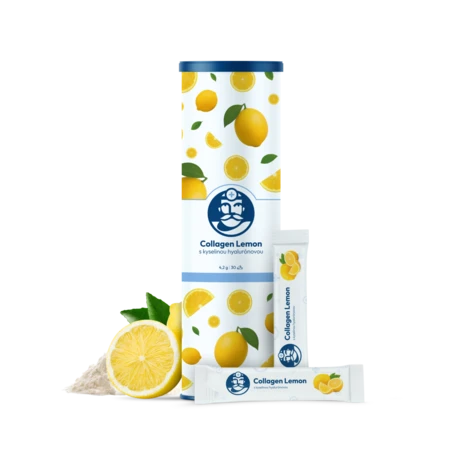
Vitamin C + Rosehip + Bioflavonoids
Designed specifically for stronger antioxidant effects, better absorption and utilization, where the main role is played by rosehip, a natural source of vitamin C. Vitamin C known as ascorbic acid is a nutrient essential for the functioning of our body. Our body cannot synthesize this essential vitamin, so it must be obtained from foods such as fruits and vegetables like citrus fruits, cabbage, bell peppers, horseradish, broccoli, and tomatoes.

Did you catch the latest trend of nature? Choline and Inositol
Sometimes it seems at first glance that we have everything under control, but the reality is often different. "Liters" of coffee, fast food between duties, endless deadlines, constantly ringing phones. The result is fatigue, problems with concentration, forgetting even simple things, moods changing faster than the weather, and nights full of tossing and turning, as if our mind is running at a minimum. In a hectic pace, we do not realize the importance of proper nutrition. The good news is that nature can save us, in nature everything can be in harmony if we combine it from nature, it is a mysterious duo of choline and inositol.It is an ideal combination not only for the body but also for a tired mind, which is calling for help. Although many are unaware of them, choline and inositol work in every cell of our body, keeping our brain in shape, liver clean, and nerves strong. Their effects were discovered relatively recently. Why should we pay attention to these nutrients?

There are days when even women need to find balance ...
In a natural supplement is hidden a less known plant hairy yam (Discorea villosa, Wild yam) from the family Dioscoreaceae. Let's get to know it ☺ There are more than 600 species of yam plants, the most notable species is wild yam (Dioscorea villosa). This perennial, low-maintenance vine (grape), of equatorial regions has heart-shaped leaves. The leaves and root contain diosgenin (the primary component), the root is used in medicine and in our supplements, as a concentrated extract (the highest yield), it is structurally similar to cholesterol. This substance was used to make the first contraceptive pills.

Is iodine a necessity? ... Iodine - Kelp
Iodine is a trace element, with an interesting role in health, which we associate with the thyroid gland. It occurs naturally in the marine environment and one of the richest natural sources of iodine is kelp seaweed, also known as "Bladderwrack, Norwegian Laminaria," which has been used in traditional medicine and cuisine for centuries. Kelp can absorb large amounts of iodine directly from the ocean. The body needs iodine to produce thyroid hormones, without which much more would not work ... our metabolism would not function properly, we would have little energy, and our minds would be dull.

Choline and Inositol
Choline and Inositol - two words you probably haven't heard before. In the world of dietary supplements, however, they are an important combination of B vitamins, which are actually not vitamins. They are substances very similar to vitamins which support liver function and lipid metabolism - that is, fat metabolism. Choline is a water-soluble vitamin analogue. It is found in lecithin, which is common in many plant and animal tissues. Choline is a precursor for the neurotransmitter (i.e., carrier) acetylcholine - which is involved in many memory and muscle functions.

... to feel content and happy in your body
Why exactly collagen + C + hyaluronic acid? In short, it is an elixir of youth, this precisely characterizes the combination of 3 powerful antioxidants. By interconnecting the components, health support is increased, not just for the skin (as it may seem). Already in youth, the amount of collagen and hyaluronic acid decreases. With this trio, we safely help to replenish them and achieve healthy skin, bones, joints, veins, strong hair, and nails. Vitamin C is necessary for the biosynthesis of collagen (also for protein metabolism) and its effective usability. Let's break it down, because it literally applies here that everything is related...






























